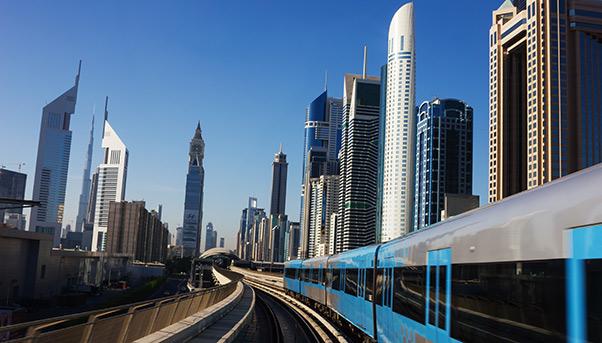
Four mega trends — globalization, demographics shifts, technological development and climate change — are set to buffet the global transport sector in the coming decades, forcing it to cope with more investment, higher energy costs and a shrinking labor pool, according to a study by the European Transport Workers’ Federation (ETF).
The trends are also intertwined, meaning that the positive impact that one of them might have on the sector will sometimes lead to another trend having a negative one, reads the study by the trade union organization, published in April. «Globalisation and the EU Internal Market (will) increase transport with positive effects on …employment but with negative impact on climate change», it says.
Big companies like Deutsche Post DHL, United Parcel Service and China Railway Group appear set to benefit from these trends as investment in technology and infrastructure improves logistics and promotes trade. Some workers, meanwhile, stand to suffer as their jobs become redundant with deregulation and automation.
When it comes to fighting climate change, even big companies will find themselves hard pressed to cope with pollution targets set by the European Union. Companies will see their profit margins come under pressure because of the investments needed for infrastructure and the shift away from oil as an energy source, the study says.
Below are the four mega trends and their expected impact on the sector, which includes public transport, passenger travel by land and air, as well as commerce by air, truck, train and boat.
Globalization and Trends in Transportation
The good news is that global trade is expected to grow. The Organisation of Economic Co-operation and Development (OECD) estimates that a third of global trade will take place among non-OECD countries by 2050 compared with 15% today.
«Industry will shift to airports and harbors as hubs, making these more important alongside growing logistics clusters, the organization of goods transport around such hubs into main corridors will have a key function. Companies serving these areas will become more influential. Infrastructure capacities will need to be expanded», reads the study.
However, these hubs will increasingly be paid for and controlled by private companies as governments curtail spending. Examples of public-private entities can be found among the four biggest Global Network Terminal (GNT) operators – APM Terminals, SP World, HPH and PSA International – that control more than half the harbors and terminals in the world.
In the EU, officials estimate €750 billion more is needed to complete its ambitious Trans-European Transport Network (TEN-T). EU Transport Commissioner Violeta Bulc was quoted by a news outlet as telling a conference last month “public funds will not be enough”. Shipping traffic will benefit from the growth in long-distance trade with Asia, with ports having to increase their facilities to accommodate a new generation of super-ships, the study said.
Italy’s ports are already losing competitiveness because they are too small to host such ships, Marco Conforti of the Federation of European Port Operators and Private Terminals (Feport) was cited in a newspaper as saying at a conference on November 7. He referred to figures compiled by the Drewry shipping consultancy that showed how average ship size on the Asia-Mediterranean route rose 10% in the year ended May 2017 alone.

Technological Change and Trends in the Transport Sector
Technology is driving changes in the transport industry in ways that once seemed like science fiction. Amazon Prime, a service of online retailing giant Amazon.com, has successfully tested delivering packages by drone in the United Kingdom. In Washington, D.C., a driverless shuttlebus named Ollli is travelling the streets, another example of how automation could eliminate entire categories of low-skilled jobs, the study says.
Digitalization, on the other hand, offers the chance to use mobility data in a targeted way to direct traffic, improving services without having to build additional infrastructure.
Increased use of sensors on trains, trucks and ships are improving maintenance, which experts believe will cause a decline in workforce size, especially in the shipping industry. But some job losses could be offset by the need for additional personnel on land to monitor the sensor data.
Demographic Shifts
By 2050, more than half of the world’s population growth will occur in just nine countries: India, Nigeria, Pakistan, the Democratic Republic of Congo, Ethiopia, Tanzania, the United States, Indonesia and Uganda. Meanwhile Europe will have nearly one third of its population aged more than 65.
In low-growth Europe, the population will rise mainly as a result of immigration caused by climate change and recurring natural catastrophes. Eastern European countries and Germany are likely to see their populations shrink. At the same time, people in Europe will increasingly flock to cities from the countryside. For companies, slow population growth will make it harder to fill the low-skill jobs common in the sector.
The aging population of Europe will have an even larger impact on the transport sector, since it has a greater number of older employees than in other sectors. «A lack of skilled workers is clearly an issue even now», the study says.
Plus, elderly citizens have different mobility needs. Whether they depend on public transport or use cars supported by driverless technology will depend on how infrastructure is designed and how much it costs to use it.
Climate Change
In Europe, researchers expect median temperatures to rise 1.0-5.5 degrees Celsius between 1990 and the end of the 21st Century. These changes will lead to increased winter rainfall and flooding in Northern Europe, and long-term water shortages and droughts in the Mediterranean.
Changes in weather patterns will create problems for transport by road and river, provoking inconvenience delays, the study pointed out.
Meanwhile, the transport sector, which is dependent on oil, will need to cut C02 emissions by 60% by 2050. Efforts to find substitutes for traditional transport in rail, road, air and sea are underway, and the investment needed is significant.
«States and companies must significantly increase their efforts in the area of research and development, and must be prepared to supply an enormous amount of financing for the purpose», the study said.

